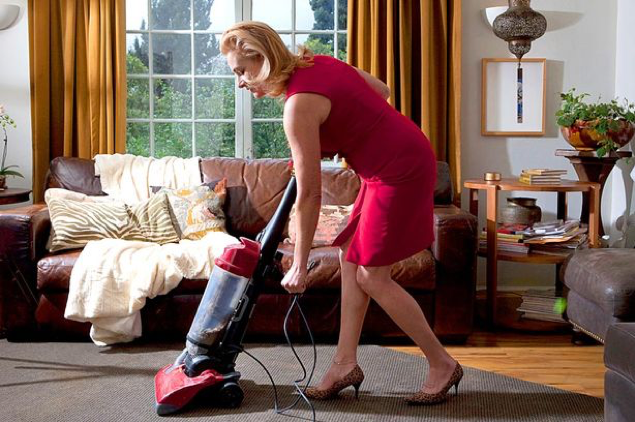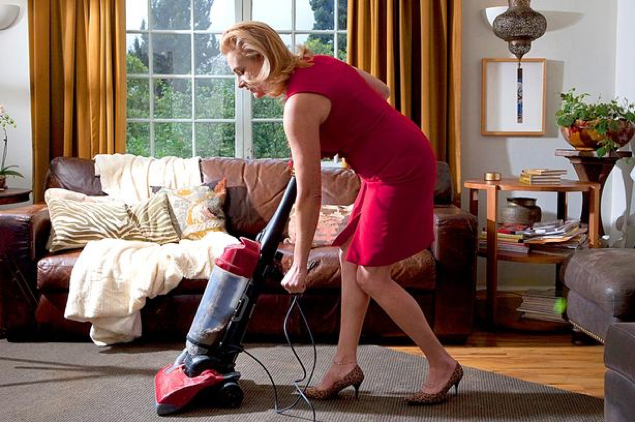The most common question we are asked about vacuum cleaners is which type is the best? Personal preference and price are often the deciding factors but there are real differences that should be considered when buying this essential piece of cleaning equipment.

Upright vacuums are designed to be easy, just grab it, plug it in, and off you go. The one- piece design allows for easy storage and reduces the need to bend when operating. However, this unibody design comes with some distinct disadvantages. The full weight of the vacuum rests on the operator’s arm, shoulder and back while vacuuming which leads to fatigue and increases the risk of strain injuries. This should be a consideration for any space that requires regular and lengthy vacuuming.
With uprights, the motor and filter are in one compact place which necessitates smaller and less powerful motors. The smaller motor does not recover as much soil and requires more passes to do a thorough job or leaves debris in the carpet. Uprights are also significantly louder as there is less room for sound insulation. For example, our leading canister vacuum, operates at 47 dB(A) while most commercial uprights operate at 70-75 dB(A). To put that into perspective; conversational tone is approximately 60dB(A) so it can make a big difference; both to the operator and the occupants if you are daytime cleaning. Better canister vacuums also have the advantage of cord rewind allowing you to only use the amount of cord you need while vacuuming, minimizing tripping hazards and making it easier to put away. Frequency and timing of vacuuming should also be considered when purchasing a vacuum.
Obviously, the space you are cleaning is an additional factor. If you are moving from carpet to hard floor, have stairs or need to clean around and under furniture, then a canister is a much better option. In fact, there are some environments where a canister is the only vacuum that makes sense. We recently had large retail clothing chain who were really challenged vacuuming the store floor. They had tried a backpack vacuum, but it kept knocking the clothing racks over when the operator turned so they were stuck using an upright that couldn’t fit through the narrow aisles or under the racks. They were vacuuming the main aisles and manually picking up plastic and tags from under and between the racks which was both labour intensive and not very effective. They hadn’t even considered a canister until we demonstrated how one with a productivity tool could easily get under and between racks as well as make quick work of the wide main aisles. It was a perfect example of the right solution for the job.
There are pros and cons for all vacuums. Canisters are lightweight, quiet, more powerful, better for getting under and around furniture, and can easily switch between carpet and hard floor. However, they also need more space to store, require some bending to turn on and off and some people don’t like pulling it behind them. Backpacks, being like canisters in operation, share most of the same pros and cons. They are better for getting around things, can be used on different surfaces, are lighter weight but some users don’t like to wear the machine. Uprights are easier to store, easy to use, and require less bending. However, they are also heavy, loud, less powerful, and difficult to maneuver under and around furniture or stairs.

Another factor to consider is the operational costs of each unit. Uprights, being smaller capacity use more bags and need to be changed more frequently. Even if you are saving money by using a shake-out bag, which is not great for air quality or allergens, you will pay more to replace brush rolls and belts over the life of the vacuum. More breakable and wearable parts also result in more downtime, so there are operational and maintenance costs to consider.
However, the biggest and most important difference in choosing a vacuum is productivity. A common belief is that uprights are better for large areas, but the productivity rates tell a different story. Upright Vacuums have the lowest productivity numbers.
|
Vacuum Type |
Square foot/hour |
|
Corded Upright |
2,857 |
|
Corded Canisters |
6,000 |
|
Corded Backpacks |
7,400 |
|
Battery Canisters |
10,000 |
|
Battery Backpacks |
15,000 |
*Based on ISSA productivity rates
Using the ISSA productivity rates, we can start to do a cost analysis on labor and the amount of equipment needed. If a corded canister cleans twice as much area in the same amount of time as an upright, then switching to a canister cuts the hourly labor cost in half. If you opt for an electric backpack you can save over 60%; a battery canister will give you a 72% savings while a battery backpack delivers a whopping 80% labor savings! These percentages equate to tens, and in larger facilities, hundreds of thousands of dollars per year. With labor accounting for nearly 55% of cleaning costs, it is imperative to look beyond the purchase price and really understand the cost of your vacuum choice. There are calculators available to determine specific labor savings based on square footage and frequency and the ROI (return on investment) associated with different types of vacuums. (you can find one on our website www.nacecare.com)
Considering the differences in design and user preference, for professional cleaners, the facts to master for success are knowing the production rates, knowing the application and then choosing the type of vacuum that puts the most money back in your bottom line.
By: Kathleen Sutherland, Director of Marketing at Nacecare Solutions
https://www.linkedin.com/in/kathleensutherland/



Enjoy this blog? Leave a comment or ask a question!